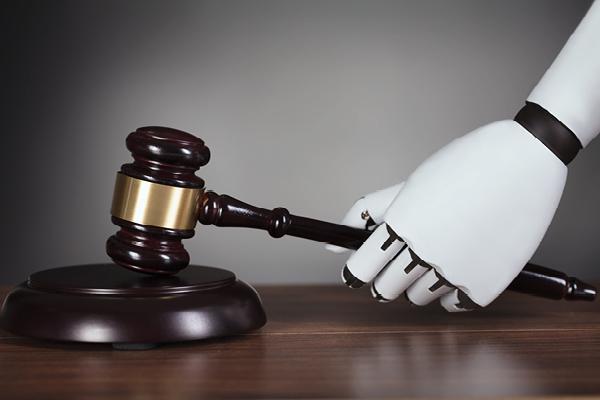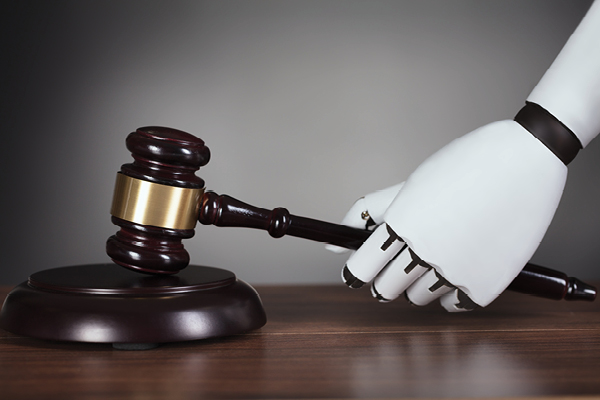
As technology continues to dramatically alter the landscape of the legal sector, one of the practice areas most impacted by this trend is arbitration. A wide range of technology providers offering solutions for the arbitration space abound, and lawyers are finding that it is imperative to get on the tech bandwagon.
Technological development is transforming law practice in the arbitration space, and familiarity with technology has already become just as important as legal expertise.
John Karamoschos, a Hong Kong-based associate director with solution provider Law In Order, says arbitration cases are becoming increasingly document-heavy and there is more electronic information than before.
“This has triggered a shift away from manual review methods towards a more sophisticated electronic method, specifically electronic discovery, also known as e-discovery, and the increased reliance on artificial intelligence (AI),” Karamoschos says. “There is a growing acceptance towards adopting e-discovery to conduct complex, large-scale arbitration matters.”
Facing more information, lawyers are using technology to make arbitration more efficient and save time and costs for the tribunal, counsel and clients, says Matthew Brown, senior associate with Clifford Chance in Singapore.
“There are online case management tools that facilitate organization of evidence and case documents,” Brown says. “There are facilities to conduct hearings via video platform, which dramatically reduce the travel costs of international hearings.”
“As technology becomes more sophisticated, it may potentially be used for tasks which have traditionally been the domain of the trainee or junior lawyer,” Brown adds.
His view is supported by Cameron Hassall, partner and head of international arbitration for Greater China at Clifford Chance, who illustrates how technologies have been helping arbitration lawyers.
“We see the use of a combination of hardware and software, including data hosting sites moving in some instances to entirely paper-free arbitrations; software to re-duplicate documents in any document review process; AI for first level reviews, video-conferencing for CMCs and parts of hearings; software that automatically links exhibits to memorials and witness evidence, and so on,” Hassall says.
Other examples, according to Hassall, include computer-generated output for the first round of translations, software capable of showing a chronology of events linked to photos, videos or graphs for opening and closing submissions, real-time translation and transcription, and the application of software to permit real-time manipulation of underlying financial information to forensically identify trends and anomalies.
Michael Thillaivasan, legal project manager for disputes at Herbert Smith Freehills, also agrees the volume of data in complex hearings has grown very quickly.
“Arbitration has pushed the development of presentation technology in hearings. The scale and complexity of data and evidence in an average hearing has increased in recent years. Technology helps to improve presentation to arbitration panels which frequently comprise parties from very different backgrounds and cultures,” Thillaivasan says.
‘These solutions can be used at every stage of an arbitration, from meetings, interviews and witness preparation through to the actual hearing itself,” he says, adding that arbitration is also moving to a more paperless model.
VARIOUS APPLICATIONS
Modern technology seems to be having a growing influence on arbitration, and firms are reacting to the change by embracing new technologies that help facilitate their work.
Karamoschos says Law In Order has an e-discovery team for addressing electronic information. The team of consultants would utilize several processing and review platforms powered by analytics.
“These platforms enable documents to be reviewed with greater speed and consistency with tools such as email threading, near-duplicate analysis and active learning technology,” says Karamoschos. “new e-discovery technology developments such as AI-powered machine-learning algorithms have vastly improved the quality of reviews, leading to minimised risks.”
“Efficiency and cost management are also major factors in decisions to adopt e-discovery,” he adds. “With the ability to predict and manage timelines during an e-discovery review, this ensures arbitration deadlines are met with greater certainty.”
On top of that, Law In Order enables e-arbitrations with cloud technology.
“We provide secure online platforms to view, share, annotate and collaborate on documents for a team that could be located in different of offices globally. The solution also makes documents available to the arbitrators via an Internet browser from anywhere in the world,” Karamoschos says.
Law In Order also offers an evidence presentation solution which is hosted locally in the hearing room and does not rely on the Internet, where “real- time transcript is available in the same web-based platform that also stores evidence, submissions, witness statements and expert reports for the arbitration, providing one platform where parties can access all documents and transcripts,” Karamoschos says.
On the other hand, Clifford Chance is using tools developed both in-house and in collaboration with third-party service providers to handle heavy document work.
“We use online systems for document management, document review and e-discovery. These services greatly reduce the need for voluminous physical bundles of documents and allow parties and tribunal to focus on the merits of the case,” Brown says.
Brown says for certain cases, technology can be used to add an extra element to the traditional advocacy process. The firm works with third- party service providers who specialise in preparing graphical or animated presentations to be used as tools during oral advocacy.
Says Thillaivasan of Herbert Smith Freehills: “We use specialists tools as well as more standard products from the Google and Microsoft suites. We’re also increasingly building our own models and application programming interface to customize our offering and expertise to clients.”
“Reducing cost and time in such complex processes is obviously important, but so too are technology tools that ease the understanding and communication for clients,” he adds.
TWO SIDES
While technology does bring improved efficiency, there are also challenges when it comes to the day-to-day operation. Legal professionals will need to understand them, embrace them and overcome them.
“There are now many technological tools well-suited to the massive arbitration involving thousands of documents where the value of investing in case management software is obvious. However, it can be challenging to nd software which is cost-effective and tailored to suit the needs of smaller arbitrations,” Brown says.
“Technology is fast moving by nature; being up to date with the most reliable, safe and efficient technology is a constant challenge,” Hassall adds. “With the use of technology, data protection and confidentiality are also a key challenge and focus,” Hassall says.
Then there comes the final ethical dilemma – AI versus human.
“It has been envisaged that AI may eventually have the potential to play a role in many facets of the arbitration process, including analysing the merits of simple claims, selection and appointment of arbitrators and even the drafting of awards. At this stage, it remains unclear if it is realistic for AI to take on these tasks, in which case, lawyers may have something to fear,” Brown says.
“In any case, as AI tools become more and more effective, this will raise some challenging issues. To what extent will end-users be happy to accept the use of AI for the sake of efficiency, but at the price of losing the human touch in the arbitration process?” he asks.
That said, Thillaivasan believes that lawyers should be open-minded.
“Technology is not always the answer, and you also need to embrace other techniques such as process management and legal analysis for the best result,” he says. “Developing confidence about new technology has helped every member of our team to open their minds to improvements.”
To contact the editorial team, please email ALBEditor@thomsonreuters.com.



